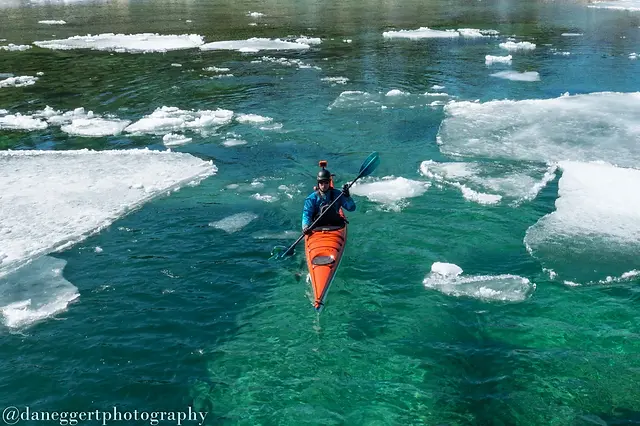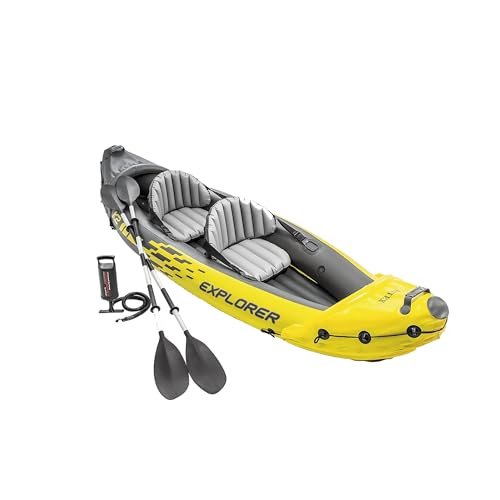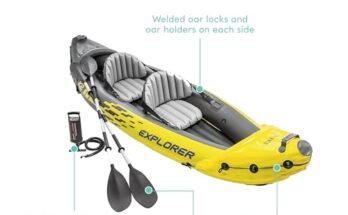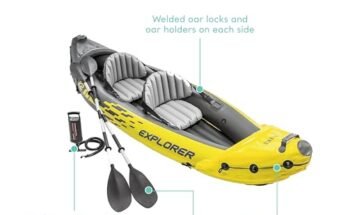Kayaking in winter might sound challenging, but it can be one of the most rewarding experiences you’ll ever have. Imagine gliding through calm, icy waters surrounded by snowy landscapes, with crisp air filling your lungs.
If you’ve ever wondered how to kayak safely and enjoyably when the temperature drops, this guide is made just for you. You’ll discover simple tips and tricks to keep warm, stay safe, and make the most of your winter paddling adventure.
Ready to turn cold days into unforgettable kayak trips? Let’s dive in.
Choosing The Right Gear
Kayaking in winter needs special gear to stay warm and safe. The cold water and air require careful choices.
Picking the right gear helps you enjoy your trip without risks. Focus on clothing, kayak type, and safety tools.
Dressing For Cold Water
Wear clothes that keep you dry and warm. Avoid cotton because it holds water and cools you down.
Use layers with materials like wool or synthetic fibers. A wetsuit or drysuit is best for cold water protection.
- Base layer: moisture-wicking fabric
- Middle layer: insulation like fleece
- Outer layer: waterproof jacket or drysuit
- Neoprene gloves and boots
- Hat to keep heat from your head
Selecting A Suitable Kayak
Choose a kayak that handles cold water well. Stability and ease of getting back in are important.
Look for kayaks with good insulation or spray skirts. Sit-on-top kayaks are less ideal in winter.
- Use a closed cockpit kayak to stay warmer
- Choose a kayak with good tracking and stability
- Consider a kayak with bulkheads for flotation
- Use a spray skirt to keep water out
Essential Safety Equipment
Safety gear is a must in cold water kayaking. It helps prevent accidents and keeps you alive if you fall in.
Carry items that help with rescue and warmth. Always wear a life jacket made for cold conditions.
- Wear a properly fitted Personal Flotation Device (PFD)
- Bring a whistle or signaling device
- Carry a paddle float for self-rescue
- Use a bilge pump to remove water
- Have a dry bag with extra clothes and first aid kit
- Bring a waterproof phone or radio for emergency
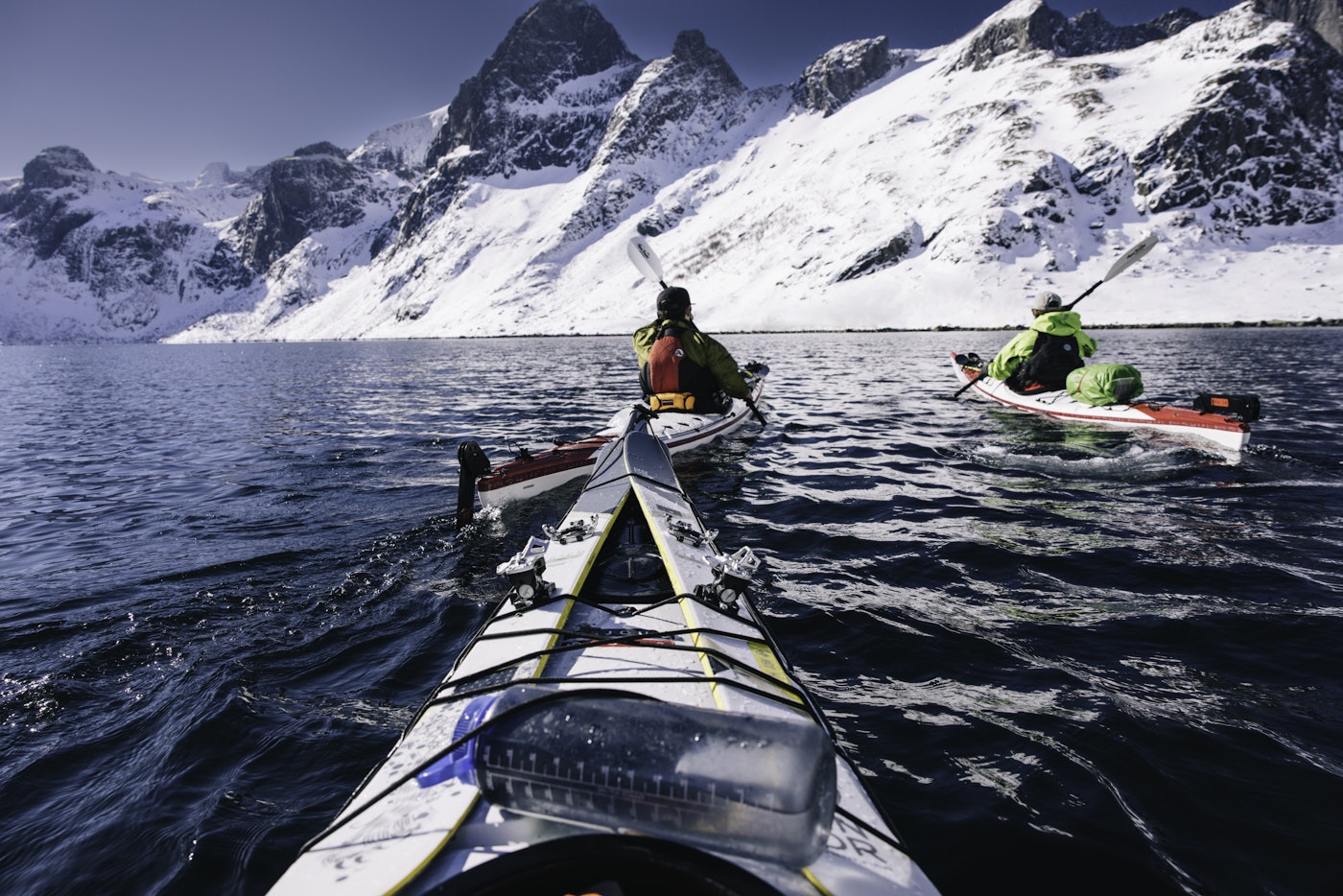
Preparing Your Kayak
Kayaking in winter needs special care to keep safe and warm. Your kayak must be ready for cold and icy conditions.
Check your equipment and supplies before you go. Proper preparation helps you enjoy the trip without trouble.
Checking For Ice And Snow
Look over your kayak for ice or snow build-up. Ice can make your kayak heavy and hard to paddle.
Remove all ice and snow from the kayak’s surface and inside compartments. This keeps your kayak balanced and safe.
Waterproofing And Insulation
Keep your kayak dry and warm by sealing all areas against water. Use waterproof covers and sealant on joints.
- Use spray-on waterproofing on your kayak fabric
- Cover hatches with tight-fitting waterproof lids
- Wrap your paddle in waterproof tape for better grip
- Apply insulation foam inside storage areas
- Wear insulated clothing to stay warm while paddling
Emergency Supplies To Carry
Bring important supplies to handle emergencies in cold weather. These items can save your life if you get stuck or cold.
| Item | Purpose |
| Thermal blanket | Keep warm if you stop moving |
| Extra dry clothes | Change into if your clothes get wet |
| Waterproof matches or lighter | Start fire for warmth or signaling |
| Whistle | Call for help if needed |
| First aid kit | Treat minor injuries |
| Portable phone charger | Keep communication devices ready |
Planning Your Route
Kayaking in winter needs careful planning. You must think about safety and weather. Preparing your route helps you enjoy the trip.
Check your path before you start. Know where you will launch and leave the water. Tell someone about your plan for safety.
Assessing Weather Conditions
Winter weather can change fast. Check the forecast for wind, temperature, and ice. Avoid kayaking if the weather is too cold or stormy.
- Look for clear skies and low wind
- Watch the temperature; stay above freezing if possible
- Check for ice on water or shore
- Listen to local weather warnings
- Plan for shorter trips to avoid cold exposure
Identifying Safe Launch And Exit Points
Choose launch spots with easy access and clear water. Avoid places with ice or steep banks. Mark your exit points in case you need to leave fast.
| Launch Point | Water Condition | Access | Notes |
| Lake Shore A | Clear | Easy | Good for beginners |
| River Bank B | Partly frozen | Moderate | Check ice thickness |
| Marina C | Open water | Easy | Close to parking |
Informing Someone About Your Trip
Tell a friend or family member where you will kayak. Share your route and expected return time. This helps if you need help.
- Give your exact launch and exit locations
- Explain your planned route and stops
- Set a check-in time
- Leave contact information
- Ask them to alert authorities if you are late
Techniques For Cold-water Paddling
Paddling in cold water needs special skills to stay safe and warm. Cold weather can make kayaking harder and more dangerous.
Use the right techniques to keep your body heat, paddle well, and handle any problems like capsizing.
Maintaining Body Heat
Wear layers of clothing that keep you warm and dry. Avoid cotton because it holds water and makes you cold. Use wool or synthetic materials.
Protect your hands, feet, and head. Use gloves, warm socks, and a hat or helmet liner. These areas lose heat fast.
- Wear a dry suit or wet suit to stay dry and warm
- Use a paddle jacket to block wind and water
- Keep moving to create body heat
- Bring a thermos with a warm drink
Efficient Paddling Methods
Use smooth, controlled strokes to save energy and stay balanced. Avoid quick, jerky movements that waste heat and energy.
Keep your paddle close to the kayak to maintain control. Use your core muscles more than your arms to paddle longer.
- Use a high-angle stroke for power in cold wind
- Switch paddle sides often to avoid muscle fatigue
- Keep your body relaxed but firm
- Practice good posture for better balance
Handling Capsizes
Be ready for a capsize since cold water can cause shock. Stay calm and try to keep your paddle and kayak nearby.
Learn how to do a wet exit and self-rescue techniques. Practice rolling back up if you have the skills and equipment.
- Wear a life jacket for safety
- Keep your spray skirt tight to avoid water entry
- Use the paddle float rescue method if you capsize
- Always paddle with a buddy in cold conditions
Safety Precautions
Kayaking in winter can be thrilling but also risky. Cold water and weather need special care.
Knowing safety tips helps you stay safe and enjoy your trip.
Recognizing Hypothermia Signs
Hypothermia happens when your body loses heat too fast. It can be very dangerous.
- Shivering that won’t stop
- Slow or slurred speech
- Confusion or trouble thinking clearly
- Weak pulse or slow breathing
- Feeling very tired or sleepy
Using A Buddy System
Kayaking with a partner is safer than going alone. You can watch out for each other.
Agree on signals and stay close. Help is faster if you keep in sight.
Emergency Rescue Tips
| Action | Details |
|---|---|
| Stay Calm | Keep a clear head to make good decisions. |
| Use Safety Gear | Wear a life jacket and use a whistle or signal device. |
| Help the Person | Reach out with a paddle or rope, do not jump in unless trained. |
| Call for Help | Use a phone or radio to contact emergency services quickly. |
| Warm Up | Get the person into dry clothes and warm shelter as soon as possible. |
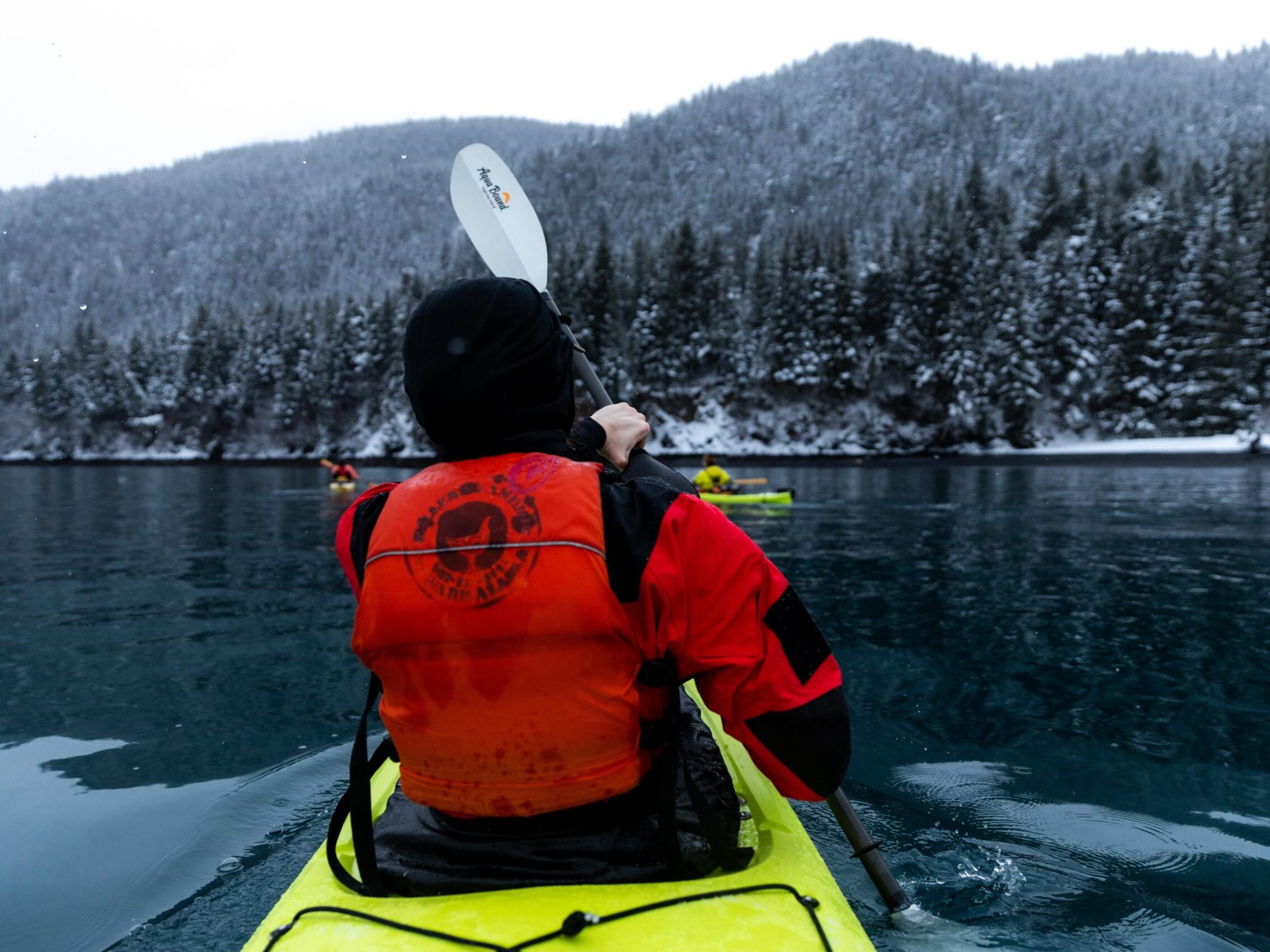
Post-paddle Care
Kayaking in winter is thrilling but requires proper care afterward. Ensuring your gear and body are well-tended keeps you safe and ready for the next adventure.
Follow these steps to care for your equipment and yourself after a winter kayaking session.
Drying And Storing Gear
Properly drying and storing your gear prevents damage and prolongs its life. Wet gear can lead to mold and mildew.
- Hang wetsuits and drysuits in a well-ventilated area.
- Store paddles vertically to avoid warping.
- Ensure all gear is completely dry before storing.
Warming Up After Paddling
Once you are out of the water, it is important to warm up your body. This helps prevent hypothermia and keeps you healthy.
Use these tips for a quick warm-up:
- Change into dry clothes immediately.
- Drink a hot beverage to raise your core temperature.
- Wrap yourself in a warm blanket.
Checking For Frostbite
Frostbite can occur quickly in cold weather. It’s crucial to check for signs after kayaking in winter conditions.
| Symptom | Action |
| Redness or pain in skin | Warm affected area gently |
| Numbness | Seek medical help if severe |
| Hard or waxy skin | Do not rub; get medical attention |

Frequently Asked Questions
What Gear Is Essential For Winter Kayaking?
Essential gear includes a dry suit, thermal layers, neoprene gloves, and a waterproof paddle jacket. Always wear a personal flotation device (PFD). Bring a spray skirt to keep water out and carry a whistle for safety. Proper gear keeps you warm and dry in cold conditions.
How Can I Stay Safe While Kayaking In Winter?
Stay safe by checking weather forecasts and water conditions before paddling. Always kayak with a buddy and inform someone of your plans. Carry a communication device, such as a waterproof phone or VHF radio. Know self-rescue techniques and avoid ice-covered or fast-moving water.
What Are The Best Kayaking Techniques For Winter?
Use smooth, controlled paddle strokes to conserve energy and maintain stability. Keep your body relaxed but engaged. Stay low in the kayak to lower your center of gravity. Adjust your paddling to avoid sudden movements that could cause capsizing in icy waters.
How Do I Prevent Hypothermia While Kayaking?
Wear layered, moisture-wicking clothing and a dry suit to stay warm and dry. Avoid cotton as it retains moisture. Keep moving to maintain body heat. Carry a thermos with warm drinks and take breaks in sheltered areas. Recognize early signs of hypothermia and act immediately.
Conclusion
Kayaking in winter offers a unique and peaceful experience. Dress warmly and choose safe, calm waters. Always check weather and ice conditions before heading out. Bring safety gear and paddle with a buddy when possible. Stay alert and respect nature’s limits.
Winter kayaking can refresh your mind and body. Enjoy the quiet beauty and crisp air. Keep practicing safety and have fun on your cold-water adventures.
